Last Sunday at the Sundown Marathon Event Launch, elite runner Marcus Ong, 29, gave a talk and shared some running tips on achieving a runner’s high and having a good race.
Discovered running when he was chased by a dog
Ong, who won the Sundown Marathon’s 10km event in 2013, started running when he was 10 years old. He discovered running when a dog began chasing him. Said Ong, now an IT executive and a national middle-distance runner, “I ran for my life, as fast as I could. The dog eventually gave up chasing me – but I was still running. That was when I felt that I could actually be good at running.”
Subsequently after this experience with the dog, Ong decided to join the track & field team in primary school. He did well there, but when he got to secondary school, they did not have a track & field team. So Ong played rugby instead. Said the runner, “But I realised that ball games could be dangerous for me, when someone tripped me up during a match. I somersaulted and injured my back and had a concussion. I had to be taken to hospital on a stretcher.”’
So when he got to ITE, this national runner made the decision to take track & field seriously. He found himself winning events more frequently and running became a joy to him. He also realised his own potential and talent in running, when he completed the 4.8km cross country run in 16.8 minutes. So his passion to run competitively, continued to follow him through in polytechnic and then university.
Here are the main highlights of Ong’s talk.
A Runner’s High
To him, a “runners high” is basically a state of inner self motivation. It is all about mental focus and telling yourself to never give up, even when the going gets tough or when you are struggling in the middle of a race.
In fact, this is the very mindset and belief that had pulled Ong towards the finishing line in the 5,000m event at the recent Singapore Open track & field championships, which had taken place earlier this month. Said Ong, “During the race, my hip suddenly snapped and I fell to the ground. I could not move at all for a while. But I wasn’t going to think of giving up the race. I just wanted to complete the event no matter what, even if I had to walk, jog or crawl.” In the end, Ong did manage to cross the finishing line – in 17 minutes and 17.59 seconds. Though the timing was a far cry from his personal best of 14 minutes, it was commendable that he didn’t give up.
Building your baseline
To Ong, you need to build your running base from scratch and start small with for example, 5km distances. Do not suddenly start with the full marathon if you have never run one before.
Once you do this successfully, upgrading to a longer distance will be quite easy. For example, if you have successfully accomplished running the 10km race well, then running 21km will not be hard – as you have the foundation for it already. This is the same, if you have fully mastered the half marathon and you want to upgrade to the full marathon.
According to Ong, you need about four months to train specifically for the full marathon and another one month to taper and get familiar with your marathon race pace. However, make sure that you are able to run 21km comfortably before upgrading to the marathon. This is because you will not only crash and burn, but risk sustaining a potential career-ending injury – if you are not adequately prepared for the toll that a marathon will take on the human body.
He added, “When I was 16, I was feeling adventurous and I decided to do a full marathon. I completed it in about three hours, but my body gave way at the end. My knee was on the ground and I could not move properly. I also had a stress fracture on my calf and shin and could not run for six months after that. When I tried to come back from injury subsequently, I was hit by plantar fasciitis and was out for another two months.”
So the elite runner has definitely learnt the hard way – and he does not want other runners to follow suit and make the same mistakes as him.
Weight Lifting vs Body-Weight Training
To Ong, body-weight training is more important to runners compared to weight training. Said the runner, “I do a lot of body-weight training, like grasshopper push ups, one leg hops, two leg hops, planking, sit-ups and bench presses. I don’t believe in going to the gym, as working with your body weight is good enough.”
He added, “Strengthening the core is crucial to running. In fact, the importance of the core muscles of a runner can be likened to how the spine supports the entire human body. So I think you need to strengthen the core through exercises.”
Here is a video of some simple exercises that Ong demonstrated to runners – to strengthen their core muscles. (See video).
Pre-Race Preparations
Good Night’s Sleep
Prior to a race, the elite runner said that it is important to get a good night’s sleep every night, for at least seven days beforehand. The minimum amount of time to rest is seven hours, but Ong himself makes sure that he gets 10 hours of rest per night, for about a week leading up to a race.
Stay away from social media
While many runners could be tempted to post updates on social media about their race preparations and how they are doing, Ong advised that runners should stay away from the lure of Facebook, Twitter and Instagram for up to two weeks before a race. Said Ong, “These are distracting and they could make you feel either lousy or uneasy. Live a simple life, like people used to do, before the era of the Internet. Spend your time watching TV, engaging in simple sports and playing old-school games – just like what I did when I was a kid.”
Diet
Ong also has a very strict diet leading up to the race. He said, “I am on a 1,500 calorie diet where I count every single calorie. I do this so that I can reach my optimum race weight. It is important to be light. If you run with a heavy tummy and mind, it is harder to carry your weight and you won’t be going as effectively.”
In fact, this elite runner’s diet is so strict that leading up to a race, he always cooks his meals at home – so that he can control exactly what goes into his tummy. He said, “It’s almost impossible to find suitable food outside. Even for supposedly healthy food such as sushi from restaurants or noodle soup from the hawker centre, you don’t know exactly what they put into it – as they usually emphasise on taste instead of health.”
Do not try anything new
Ong said that it is important to not try anything new before a race. This extends to shoes, running tee and shorts, as well as your sleeping and dietary habits. Also, do not go and try a new exotic dish prior to the race – something that’s especially important if you are running overseas.
Compression Wear
The runner recommended wearing compression gear to sleep, at least one day before the race. He said, “My muscles will get tight and they need to loosen. Wearing compression tights would help me to mould my muscles so that I can take off fast the next day at the race.”
Prepare everything the night before
You should prepare all your pre-race gear the night before. For example, lay out the running tee, shorts, socks and shoes that you will be wearing at the race. Also, make sure that you have your number tag ready and check through everything twice to ensure that you have not forgotten something important.
Pre-Race Stretching
About 30 minutes before a race, Ong advised runners to do static stretching to get the body engine working. About 15 minutes to flag off time, do dynamic stretching such as high knee lifts, butt kicks and so on.
Then one minute before the flag off time, you should psyche yourself up to achieve what you want to do and think positively, regardless of what your race goal is, for example, to run a personal best or to win the race, and so on.
Pacing
Pacing yourself is very important to running a good race.
Ong said that you should begin running at a comfortable pace for the first kilometre. Do not shoot out of the blocks as fast as you can – because you will be exhausted before you know it. Then at two to three kilometres into the race, increase your speed gradually. For example, if your pace at 1km was 3:40 minutes per km, you should increase this to 3:39 minutes per km in the second kilometre. Allow your speed to find you and let it work for you – do not let outside distractions or other runners bursting at breakneck speed, control how fast you are running, especially in the first half of the race at least.
Then at about 6 to 7 kilometres into the 10km race, you should put on a burst of speed as you will now be more than halfway into the race. In the final 2km, give it everything you have in your reserves – and go for it. If you have been running at about 3:30 minutes per km until now, you should push hard and go for broke, at about 3:03 minutes per km – till you cross the finishing line.
According to Ong, a similar rule also applies for half marathon and full marathon runners. Said Ong, “For a 42km race, the last thing you want to do is to run so hard that you collapse and die at the 10km mark. It’s the exact same concept for 21km. Be consistent. Do not suddenly increase or decrease your pace drastically.”
At the same time though, Ong also added that runners should try and pinpoint their own pace by feel – and not by a GPS watch. Said Ong, “We all rely too much on GPS watches I think the GPS reliability is false. For example, I have tried my GPS watch on a 10km track – but my GPS said I had run 10.5km. If you rely too much on GPS, you may be running too fast or too slow. I never wear a watch in a race. I always run by feel.”
Cooling Down
Ong does not believe in doing cool down exercises after a race, because he will be running and training again the next day anyway, so there is not much point in letting the body relax, only to fire it up again so quickly, according to the runner.
Said Ong, “But I do apply cool down creams. Or else I could wear a compression sleeve on my legs. This works for me. If I do cool down exercises, they seem to really increase my risk of injuries, so I don’t bother.” In addition, he also takes protein drinks such as Maxi Build to help his body to recover.
Eat till your heart’s content
Once you are done with the race, you are allowed to pig out on anything you want according to Ong. He said, “After a race, I go to a fast food restaurant or a buffet.” His personal guilty pleasure would be McDonald’s chicken nuggets.
Also, due to his strict pre-race diet, this is an opportunity for Ong to let himself loose and simply indulge in whatever he desires.

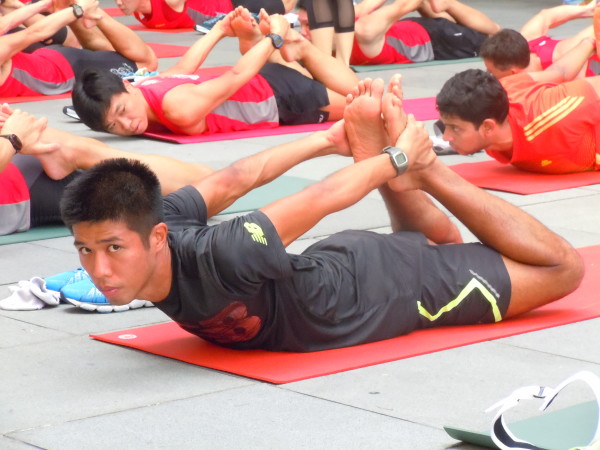
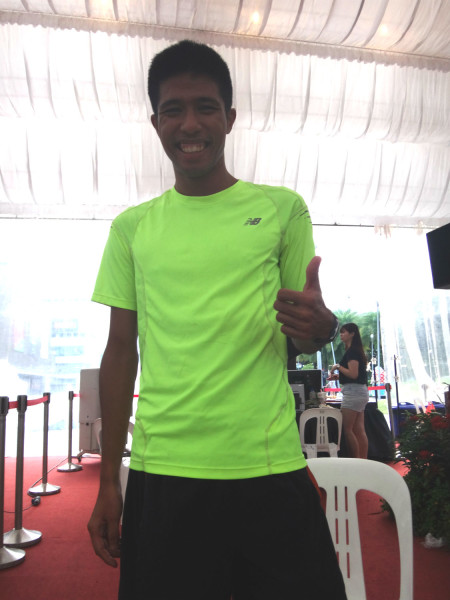
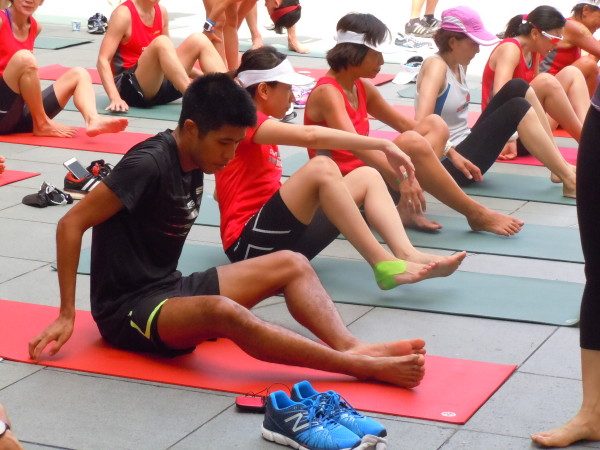
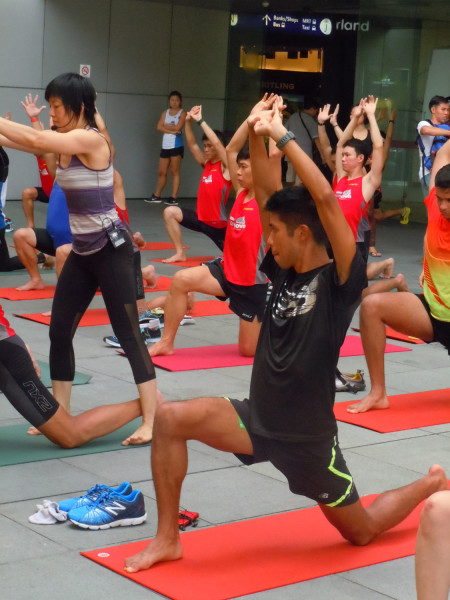
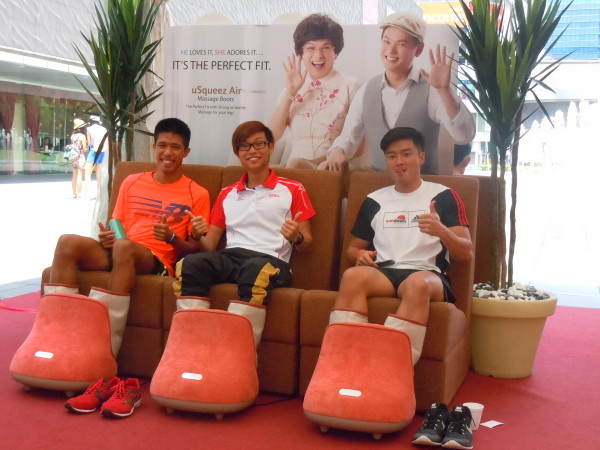

Leave a Comment